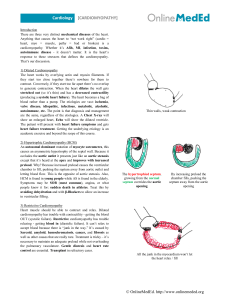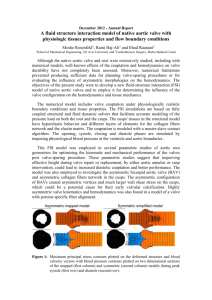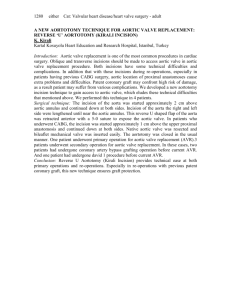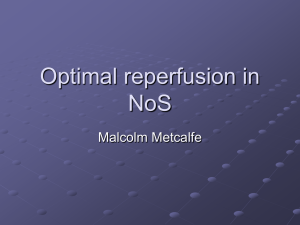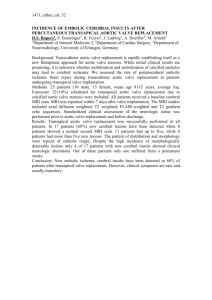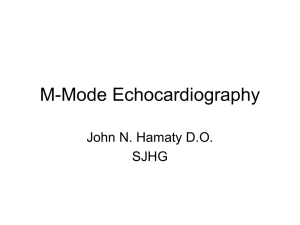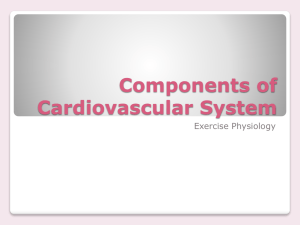Genetics of Cardiovascular Disease
advertisement
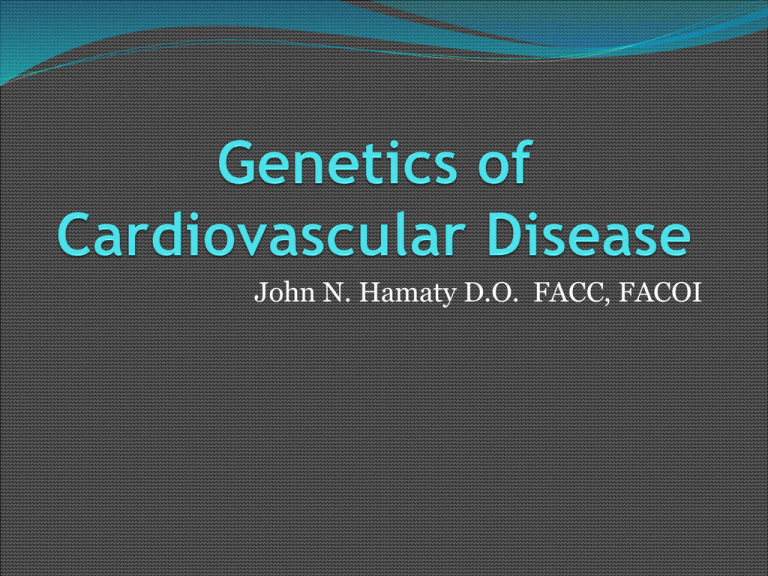
John N. Hamaty D.O. FACC, FACOI Cardiovascular Genetics Environmental causes- trauma, malnutrition, drug abuse-defined by body response- phenotype Genotype-how patient suffers or recovers Therefore, genetics plays a role in both cause and process; etiology and pathogenesis Cardiovascular Genetics Genotype-detrimental in two distinct ways Mutant genes upset embryology or physiology Known as genetic diseases Facilitate the action of an extrinsic cause in producing a disease-coronary artery disease Inherited susceptibilities Cardiovascular Disorders Associated with Chromosome Aberrations Trisomy 21- Downs Syndrome Most common phenotype 1/600 births Maternal age; >35 years and greatest >45(4%) CHD present in 40-50% Endocardial cushion defect Atrial septal defect with cleft mitral valve Pulmonary Hypertention Cardiovascular Disorders Associated with Chromosome Aberrations Turner syndrome- 45,X karyotype 1/2500 females lacks an X chromosome Short stature or amenorrhea is evaluated 20-50% report cardiovascular abnormalities Aortic coarctation Bicuspid aortic valve Dilated aortic root Congenital Heart Disease Incidence- 3.1-3.5/1000 Two mechanisms- multifactorial and mutations of single genes Multifactorial Processes Familial Atrial Septal Defect-primum/secundum Holt-Oram Syndrome-autosomal dominant Dysplasia of upper limbs and ASD “Digitalization of the thumb” Secundum ASD Supravalvular Aortic Stenosis Asymptomatic Williams Syndrome-sporadic,,haighly variable autosomal dominant Elfin facies Pulmonic stenosis Supravalvular aortic stenosis Mitral valve prolapse Mitral Valve Prolapse Heterogeneous Most common abnormality of human heart valve Autosomal dominant-minimal form Autosomal dominant-variable Marfan syndrome Teratogenic Effects Ethanol- 50% CHD: VSD, ASD Most common teratogen to which fetal embryo and fetus are exposed-first trimester Warfarin- 10% CHD: PDA, PS, intracranial hemorrhage Fetal Rubella- 50% of fetuses become infected with rubella virus when mother is infected during first trimester. PDA and ASD, PS Hypertrophic Cardiomyopathy Phenotype is anatomic and histologic Myocardial hypertrophy without secondary cause; cellular and myofiber disarray, fibrosis and cad. No pathognomonic findings Affects first degree relatives and in families the phenotype is inherited and an autosomal dominant, familial hypertrophic cardiomyopathy Hypertrophic Cardiomyopathy Wide range of expression due to age Older age has less expression Therefore, pedigree screening by phenotype for clinical, counseling purposes isn’t complete without the following: Echocardiogram-segmental hypertrophy LVH without any other explanation Hypertrophic Cardiomyopathy FHC-disease of the sarcomere Classic mutations of at least six loci The first is 14q1 and the cardiac B-myosin heavy chain gene 50% of all FHC occur here FOCUS ON CORONARY HEART DISEASE AND TREATMENT John N. Hamaty D.O. FACC, FACOI Small dense LDL LDL A-large buoyant particles LDL B-small dense particles Oxidization of LDL results in exposure to endothelial cells, smooth muscle cell and macrophages Oxidized LDL-adherence to arterial wall-activation of macrophages High Dense Lipoproteins Secreted by the liver and intestine Lecithin activity of cholesterol acyltransferase is generated from the phospholipid and cholesterol molecules producing HDL HDL-2 and HDL-3 Women have higher levels Development of Atherosclerotic Plaques Fatty streak Normal Lipid-rich plaque Foam cells Fibrous cap Thrombus Lipid core
